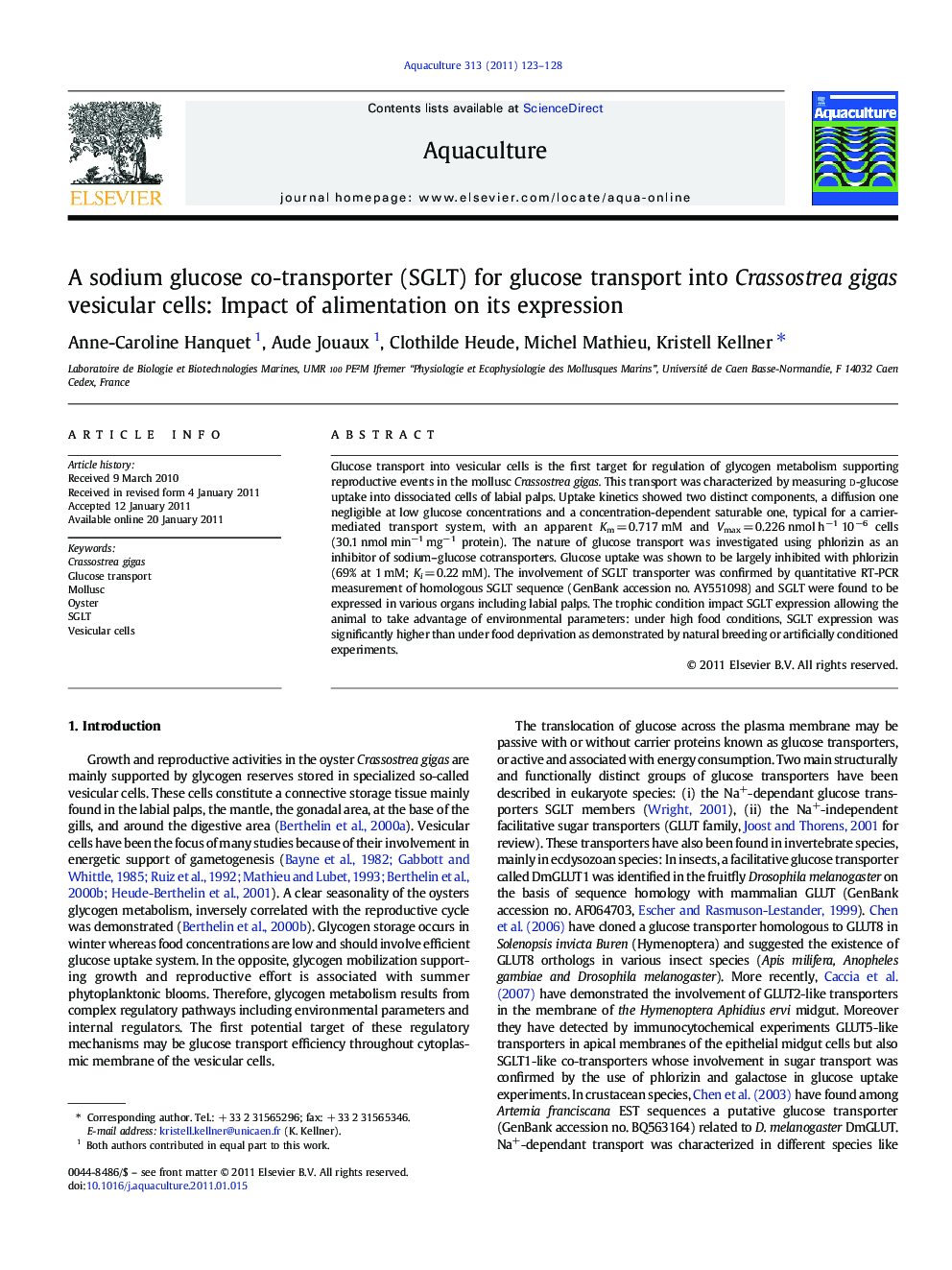| Article ID | Journal | Published Year | Pages | File Type |
|---|---|---|---|---|
| 2423329 | Aquaculture | 2011 | 6 Pages |
Glucose transport into vesicular cells is the first target for regulation of glycogen metabolism supporting reproductive events in the mollusc Crassostrea gigas. This transport was characterized by measuring d-glucose uptake into dissociated cells of labial palps. Uptake kinetics showed two distinct components, a diffusion one negligible at low glucose concentrations and a concentration-dependent saturable one, typical for a carrier-mediated transport system, with an apparent Km = 0.717 mM and Vmax = 0.226 nmol h−1 10−6 cells (30.1 nmol min−1 mg−1 protein). The nature of glucose transport was investigated using phlorizin as an inhibitor of sodium–glucose cotransporters. Glucose uptake was shown to be largely inhibited with phlorizin (69% at 1 mM; Ki = 0.22 mM). The involvement of SGLT transporter was confirmed by quantitative RT-PCR measurement of homologous SGLT sequence (GenBank accession no. AY551098) and SGLT were found to be expressed in various organs including labial palps. The trophic condition impact SGLT expression allowing the animal to take advantage of environmental parameters: under high food conditions, SGLT expression was significantly higher than under food deprivation as demonstrated by natural breeding or artificially conditioned experiments.
